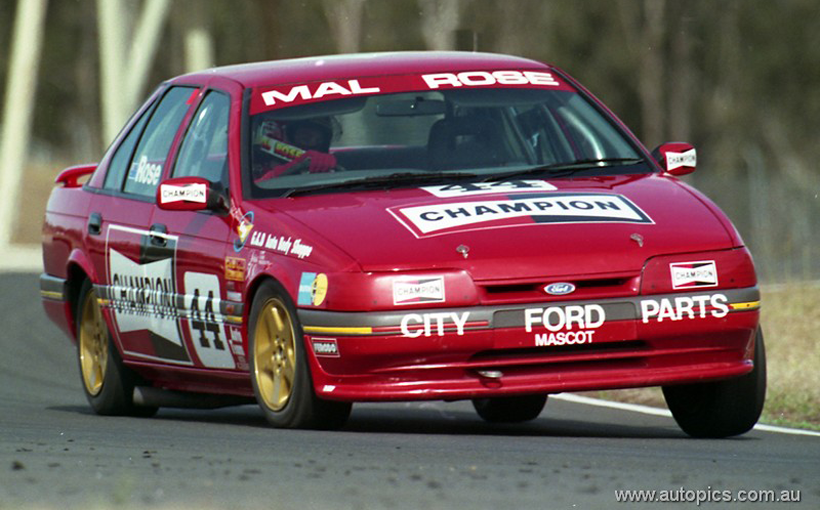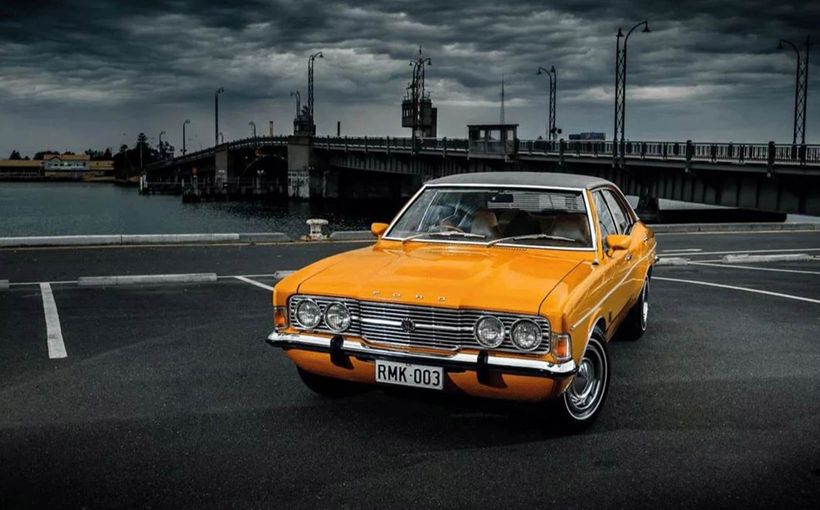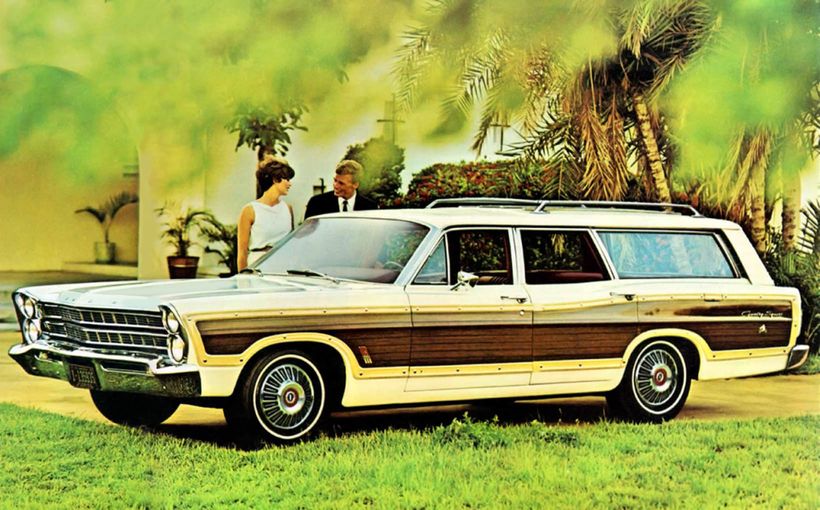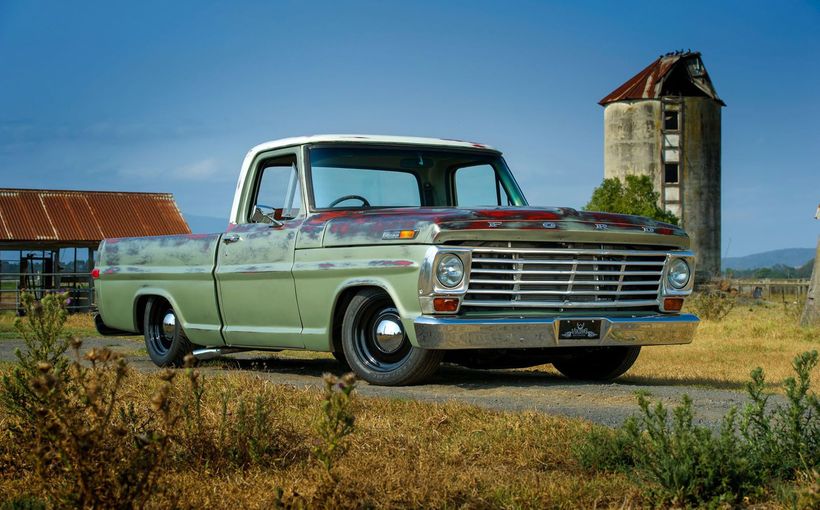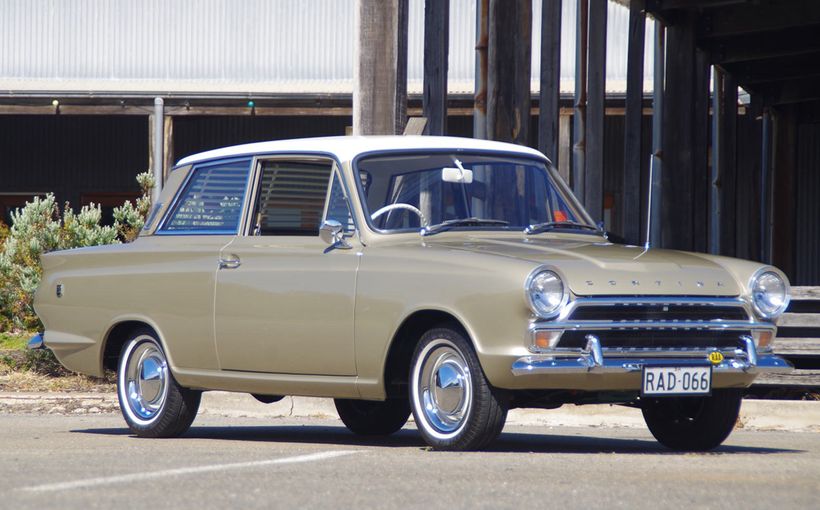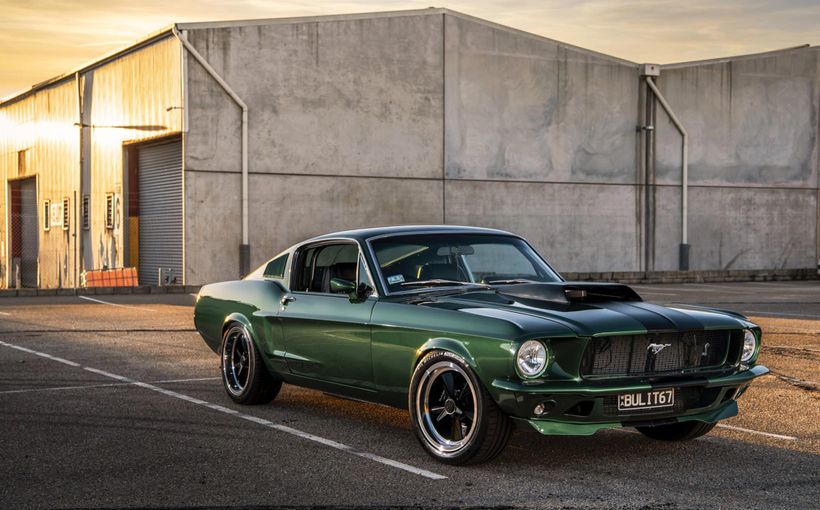Falcon EB SS: Is this Ford Australia's rarest factory race car?

The immortal Falcon GT-HO is usually the first car that springs to mind in any discussion about rare Aussie Fords that were built in small numbers (200) specifically to go racing. However, two decades later came another rare Falcon designed with competition in mind - and Ford built only 10 of them.
Just as the ‘HO’ versions of the Falcon GT were designed to win at Bathurst, the little known EB II Falcon SS (or EB SS for short) that came along about 20 years later was also designed with a specific task in mind – to win the Australian Production Car Championship (APCC). And, like the GT-HO, it delivered.
It’s interesting to compare the performance of these two Ford factory race cars in different eras at Mount Panorama. At the GT-HO’s first Bathurst appearance in 1969, Pete Geoghegan claimed pole position with a time of 2 min 48.9 secs. More than two decades later, the fastest time set by an EB SS on its Mountain debut was 2 min 44.01 secs.
Even allowing for big technology gains in that time, the superior performance of the EB SS is still impressive given that its 4.0 litre inline six had about half the grunt of the GT-HO’s 5.8 litre V8, in cars of similar weight. And given that the addition of the ‘Chase’ deviation on Conrod Straight in 1987 added several seconds to lap times.

The seed for the EB SS program was planted in 1990, when previously dominant turbocharged sports cars like the Mazda RX-7 Series IV and Toyota Supra were bumped from the APCC in favour of more affordable six cylinder family cars more relevant to the man on the street.
This decision triggered yet another racetrack civil war between arch rivals Ford and Holden. At that time their respective Falcon and Commodore sedans commanded a huge slice of the new car market, so the APCC for Group E production cars presented a unique opportunity to indulge in a straight-off-the-showroom-floor brawl just like the good old days.
Keep in mind that in 1992 the premier Group A division of Aussie touring car racing was in its dying days. Group A had been axed in Europe several years before and our local racing was dominated by turbocharged Ford Sierras and Nissan Skylines. Commodores copped a regular beating and there were no Falcons competing.
Not surprisingly, the Falcon vs Commodore APCC had more home-grown appeal and was starting to generate some healthy media and spectator interest. So it was only a matter of time before Henry and The General went searching for the unfair advantage again, using the time-honoured tradition of building small batches of road registerable race cars to comply.

The sport’s governing body CAMS was keen to encourage this direct factory involvement by Ford and Holden without them having to go to extremes to do it, like the old days of ‘Series Production’ racing when each had to manufacturer and road register at least 200 examples of the car they wished to race at Bathurst each year.
So CAMS stated that this time a minimum of only 10 cars would need to be ‘factory built’ by each manufacturer to be eligible for the APCC. This would mostly require mixing and matching of the best components already available within each marque’s parts inventory, which kept the whole exercise reasonably cost-effective.

Commodore SS versus Falcon SS
The emphasis with these Group E production car racers was not on trying to produce massive grunt from their six cylinder engines. Increasing power and torque output was certainly one of the goals, but they primarily had to stop and turn well to be winners.
Holden fronted with its ‘V6 SS’ which was effectively a VP Commodore SS fitted with the company’s potent 3.8 litre V6, five-speed manual gearbox with optimised ratios and a 3.27:1 IRS. More grunt was tapped from the Buick-derived V6 through remapping of the ECU. Little is known about these cars today and how many were officially built by GM-H.
Ford followed a similar theme, basing its new 1992 APCC contender on the latest Series II version of the popular EB Falcon S model with upgrades to engine, drivetrain, suspension and braking. The EB II Falcon range, released in April 1992, was headlined by a boost in capacity for its fuel injected SOHC inline six from 3.9 to 4.0 litres. And to go with it, the option of anti-lock brakes – the first time ABS had been offered in a Falcon.

Ford adopted an identical ID to Holden for its competition-bred Falcon, by simply adding a second S to the existing Falcon S Pack logo.
The EB SS was designed and built with considerable input from Tickford Vehicle Engineering (TVE), as the UK based company was in the early days of its role as Ford Australia’s special vehicle partner developing sporty Falcons under the ‘XR’ nameplate. The EB SS project served as a useful test bed for TVE and Ford, as they refined the final specification of what would become the first Falcon S-XR6 released in September that year to wide acclaim.
For the casual observer, this discreet factory-built racer was tough to pick from a standard S Pack, with its subtle front and rear spoilers and small SS badge on the tail being the only major visual changes.
Tickford tickled the fuel-injected 4.0 litre six to produce 13 kW more power and close to 20 Nm more torque than the base engine, resulting in 161 kW and 365 Nm. These figures were the same as quoted for the XR6 that followed a few months later.

To release those extra horses, EB SS tweaks included remapping of the engine’s ECU to increase the big six’s rev limit from 5300rpm to 5700 rpm. The compression ratio was also raised from 8.8:1 to 9.0:1 with a mild shaving of the cylinder head and the valve timing advanced by alternate positioning of the single overhead cam’s drive sprocket.
Unique to the EB SS was also a thicker engine drive belt and larger diameter pulleys for the alternator and power steering pumps. The heavy duty belt was designed to eliminate breakages; the larger diameter (thus slower turning) pulleys reduced oil temperatures in the power steering system and alternator damage caused by the higher rpm used in racing.
Greater engine demands also required use of the V8 radiator and shroud from the EB Falcon S-XR8 (sporty 5.0 litre V8 model developed just prior to TVE's joint venture with Ford) for better engine cooling. Fortunately, for track use the catalytic converter could be removed, as in previous years of production car racing they had proven to be the cause of engine overheating. A free flowing 3.0-inch diameter exhaust system could be fitted after the standard exhaust header.

Also borrowed from the parts bin was the V8's stronger alloy-cased Borg Warner T5 five-speed gearbox, with a unique input shaft to suit the six cylinder engine and lighter flywheel. An aluminium V8 tail-shaft sent the power rearward to a special Borg Warner rear axle assembly.
A shorter and punchier 3.45:1 final drive replaced the six’s 3.27:1 for sharper acceleration. And the LSD clutch-packs, which normally allowed 25 percent slippage for road use, were shimmed up very tightly for zero slip. These cars weren’t allowed to run locker diffs, so this was the next best thing.
As mentioned earlier, the EB SS also featured Ford’s new Bendix ABS system and proof of its durability and effectiveness was that it remained standard in these cars. Drivers that raced the EB SS were full of praise for its controlled braking capabilities and absence of lock-ups no matter how hard they pushed the middle pedal.
The rear suspension featured revised locating points on the rear axle assembly to optimise rear roll centre height. The front suspension geometry was also altered for racing, with a unique upper arm 'kit' which allowed for more negative camber/positive caster on the front wheels to improve grip and tyre life. These changes also contributed to a lower static ride height, which also lowered the car’s centre of gravity for better handling.

Australian Production Car Champion
The EB SS became a reality in May 1992. With only 10 claimed to have been built by Ford, at least three of them were immediately snapped up by leading Falcon racers Mal Rose, Ken Douglas and 1990-91 APCC champion Kent Youlden to take on the V6 SS Commodores.
What happened to the remainder of the EB SS fleet remains a mystery. Many years ago Super Ford magazine (whose founding editor was our own Dr John Wright) went in search of them without success, although it did stumble across an interesting anecdote which confirmed the car’s competition focus:
“Fortunately we did manage to find out about an SS sold at a Ford dealership in western Sydney with a sticker price of $31,467 plus on-road and all the other accumulative costs. Interestingly, the dealer claimed that the car wasn’t allowed to be sold to another motorsport competitor only for road use.”
The new EB SS Falcons made their competition debut at the fourth round of the eight-round 1992 APCC, after the Commodores had defeated the EA-EB Falcon S campaigners in the first three rounds. Although Holden won again that weekend, the boost in performance provided by the new EB SS allowed Mal Rose to win three of the next four rounds in a remarkable fightback.

Unfortunately for Ford, the EB SS had arrived too late to maintain its APCC superiority with Commodore driver Terry Lewis claiming the title ahead of Holden rival Terry Bosnjak, with Mal Rose finishing a fighting third overall. In 1993, though, Rose delivered the victory the EB SS was built for, claiming the APCC title from Commodore rival Terry Bosnjak.
However, by then Ford and Holden had withdrawn their support of the six cylinder production cars in favour of the new Group A 5.0 litre V8 touring car category (aka V8 Supercars). CAMS also announced a new direction for the APCC in 1994 based on 2.0 litre front wheel drive cars, so the four-year ‘Battle of the Sixes’ between Falcon and Commodore was officially over.

EB Falcon V8 Supercar
In 1993 the top level of Australian touring car racing underwent a major change, with the axing of the turbo-dominated International Group A class in favour of a new set of home-grown touring car regulations that celebrated the long-awaited return of the Falcon V8.
The new rules were framed around Ford’s then current model EB Falcon V8 and Holden’s VP Commodore V8, with each having theoretically a 50 percent chance of winning.
Although it was touted as the return of the great ‘Aussie’ V8s, under those Falcon and Commodore bonnets were primarily US-sourced Ford and Chevrolet engines with a 5.0 litre capacity limit, 7500 rpm cap and 10:1 compression ratio to keep a lid on running costs. Power was estimated to be around 550 bhp (410 kW) with 450 ft/lbs (607Nm) of torque.
The gearbox mandated for use in both cars was a six-speed competition unit supplied by local race transmission guru Peter Holinger, feeding power to a multi-link live rear axle equipped with Ford’s ubiquitous nine-inch crown wheel and pinion.

Front suspension architecture had to remain faithful to the showroom product, with twin wishbones in the Falcon and MacPherson struts in the Commodore. A minimum racing weight of 1300 kg was imposed, which was later increased to 1350 kg.
Aerodynamic devices in the form of a large front spoiler with an inverted wing or ‘under-tray’ and a large boot-mounted rear wing were mandated, largely on safety grounds. Standard rolling stock was 17 x 11-inch wheels with big 12-inch wide tyres.
This thundering new breed of Aussie V8 touring car was designed to deliver fast, loud and close racing and the EB Falcon certainly grabbed a fair share of the spoils for Ford. Glenn Seton won the 1993 Australian Touring Car Championship in his ‘Peter Jackson’ EB Falcon before Dick Johnson and John Bowe teamed up to win the thrilling 1994 Tooheys 1000 at Bathurst in their Shell-backed EB.
The EB Falcon, in either hot six SS trim or as a highly modified V8 Supercar, proved to be a prolific winner in the early 1990s and one of Ford’s most successful racing models.
Protect your Falcon. Call Shannons Insurance on 13 46 46 to get a quote today.

